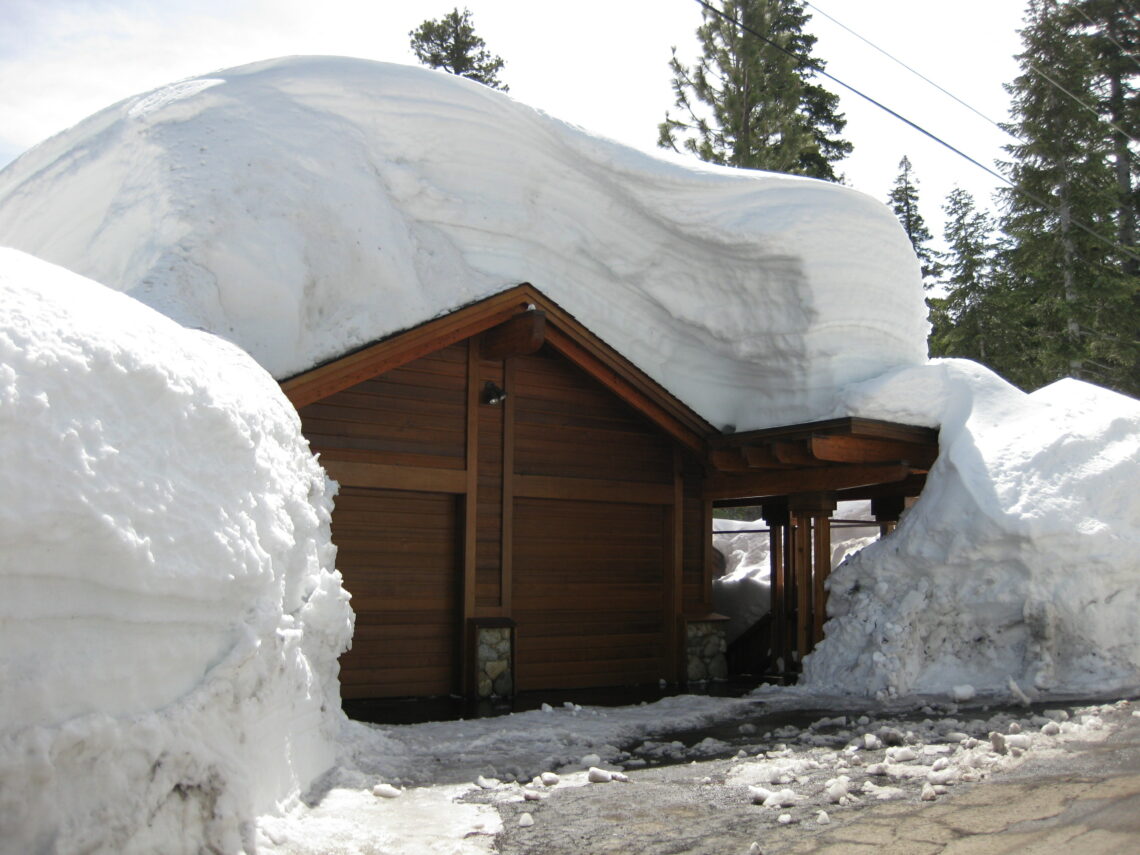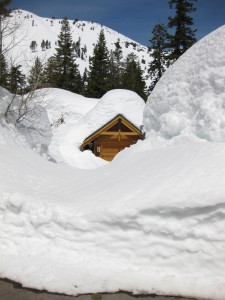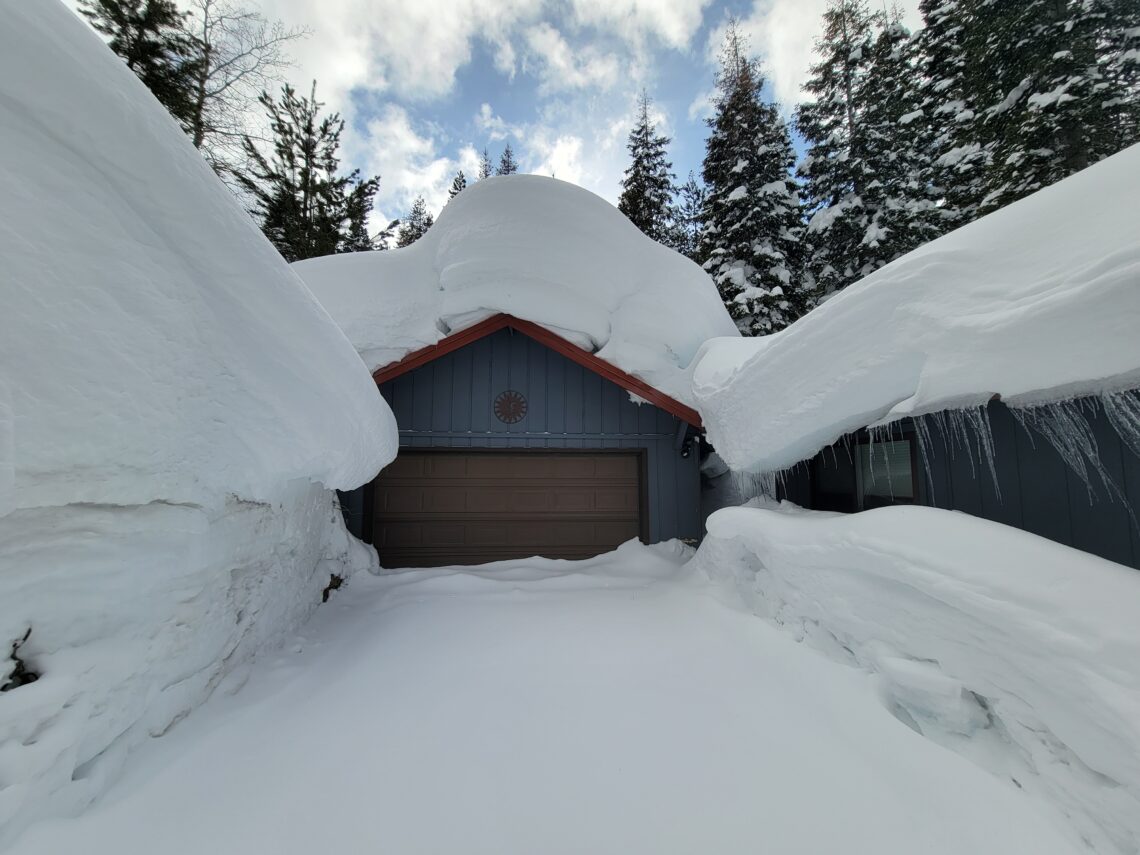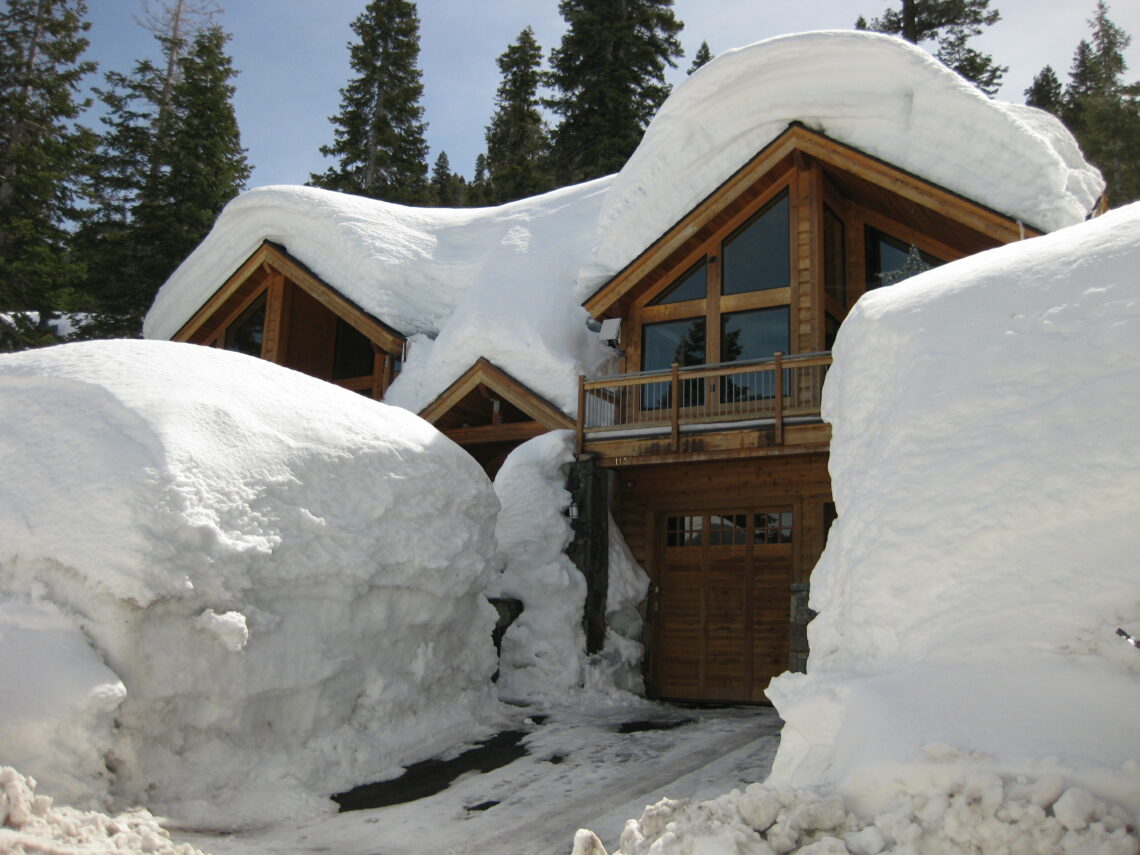Winterizing Your Lake Tahoe Home to Avoid Costly Repairs – Tips and Tricks
Winterizing your Lake Tahoe home at the end of the summer/early autumn is the best time to take precautions to make sure that your Lake Tahoe home is ready for the harsh winter ahead. In the Tahoe region, winter can set in quickly, one day it will be sunny and 60 degrees and the following day the temperatures can drop to below freezing which can wreak havoc on your home. Costly repair bills are completely avoidable if you take the time to prepare your home for winter.
The tips shown below are basic guidelines and professionals should always be contacted to provide recommendations and additional insight.
Prevent Pipes from Freezing
If you are going to be away from your Lake Tahoe home for more than a few days you should consider turning off your water and draining the supply lines the next time you leave town. Here are some steps you can use to help prevent your pipes from freezing and causing costly damage to your home:
1. Use your home’s water shut-off valve to turn your home’s water off. If you are unsure of how to do this contact a local plumber to walk you through the steps on how to correctly turn your homes water off.
2. Once the water supply is turned off, you can open all the water faucets throughout the house and flush all the toilets to empty the tanks — this allows any excess water to drain from the lines and tanks. New homes or updated homes typically have stop and drain valves, so when you shut the water off, the water lines are automatically drained. It is important to know what kind of valve you have. If you are going to be away from the house for an extended time period, consider pouring anti-freeze in all the p-traps to prevent them from freezing. Consider consulting a professional if you have questions or are unsure of your homes plumbing system.
3. Set thermostat to at least 50 degrees. I always recommend 55 degrees to stay on the safe side. Homes live better if they do not freeze and your appliances, plumbing fixtures, drywall, etc. will thank you in the long run.
Disconnect Hoses and Drain Irrigation Lines
Many newer homes in the Lake Tahoe area have “freeze proof” exterior water spigots, so you will only need to remove hoses from the water spigots so that water does not collect, freeze and damage your hoses. Some older homes may not have “freeze proof” spigots which require additional steps to waterproof. If you are unsure of which type of spigot your home is equipped with, consult a local plumber for specialized instructions.
Irrigation lines will also need to be drained using your systems King drains and/or using air pressure to make sure that water does not collect in these lines which will eventually freeze, causing the lines to rupture, which will result in costly repairs. If you are unsure of how to winterize your irrigation lines you should contact a local landscaping company to learn the tips and tricks to maintain and preserve your irrigation system.
Plumbing
Plumbing is especially susceptible to cold weather and freezing. Burst pipes from freezing can cause some of the most expensive repairs in the home. So let’s go over some of the basics to make you have them covered.
- Insulate Exposed Piping
If you have any exposed water or drain piping at all in uninsulated spaces such as in a crawlspace, attic, outside walls, etc., make sure to insulate them with foam insulation at a minimum. Ideally you should wrap them with electrical heating tape first, then insulate them.
- Seasonal Shut-Down
If you are shutting down a property for several months you should always shut off the water supply and drain the plumbing system. If a leak were to occur without occupancy, the damage could be catastrophic. See How to Drain Your Home’s Plumbing System.
Heating System Checklist
- Test Run
Turn the thermostat to heat mode and set it to approximately 80 degrees just for testing. You should hear the furnace turn on and warm air should start to blow through registers within a few minutes. If the furnace is running OK, turn the thermostat back to its normal setting. If it’s not running properly I would recommend having a HVAC specialist come to your house to diagnose the system and make any necessary adjustments. - Seasonal Maintenance
In order to make sure your furnace works efficiently for the longest time possible it’s a good idea to have your furnace serviced annually by a trained HVAC specialist. - Replace the Air Filter
Put in a new clean air filter (every other month). It’s easy, just follow the steps in Furnace Filter Replacement - Heating Vents
Clear obstacles to heating vents so air can freely flow. It is also a good idea to remove the heat registers so that you can look into the vents and see how much dirt and debris has built up. The cleaner the duct work is the healthier your home will be. Consult with your HVAC specialist to determine if you need to have your duct work cleaned. - Check for Carbon Monoxide Leaks
Carbon Monoxide is a silent killer and it is easy to protect your family by installing Carbon Monoxide (CO) detectors on each living area of your home. Make sure to change the batteries in your CO detectors annually, the end of daylight savings is always a great time to replace batteries in your CO detectors and smoke detectors.
Chimney and Fireplace/Woodstove
- I recommend having your chimney swept by a professional every year.
- Check that the chimney is clear of any nests from birds, squirrels or other animals.
- Check flue damper operation and make sure it opens and closes fully.
- Check chimney draft. Make sure the chimney will draw up the fire and smoke properly. Test this by taking several sheets of newspaper and rolling them up. Then with the fireplace damper in the open position, light the newspaper in the fireplace. The smoke should rise up the chimney. If it doesn’t, you have an obstruction and need to call a professional in to clean the chimney of creosote and ash and possible debris.
- If applicable, inspect the fire brick in your fireplace. If you see any open mortar joints have them repaired immediately! A fire can spread into the stud wall behind the masonry fire brick through open mortar joints.
How to get your Tahoe Fireplace ready for winter
Doors and Windows
Infiltration of cold air from air leaks around doors and windows can be a costly and easily resolved issue. Upgrading old windows with newer, energy-efficient models will significantly boost your utility savings. An easy way to save on your heating bill is to reduce these drafts with simple weatherstripping. Caulking around windows degrades over time and will need to be replaced. Make sure to inspect the weatherstripping on all doors to make sure it is there and that it is in good condition. If the weatherstripping is crushed or damaged it is a good idea to replace it and save money on your heating bill.
Inspect and Repair Roof
 Check the roof of your home for missing shingles, shakes, or damaged materials (metal) and repair as needed. I recommend having a professional roofer inspect your roof every year as this will allow you to make repairs that might not be obvious but could prevent leaks. Roof inspections cost around $200 – $300+ depending on the size of the home and are worth the expense.
Check the roof of your home for missing shingles, shakes, or damaged materials (metal) and repair as needed. I recommend having a professional roofer inspect your roof every year as this will allow you to make repairs that might not be obvious but could prevent leaks. Roof inspections cost around $200 – $300+ depending on the size of the home and are worth the expense.
Close Foundation Vents
Close foundation vents when colder weather begins and reopen again in the spring for proper ventilation. (Some contractors suggest that you leave at least two sub-area vents, for cross ventilation, open year round for proper ventilation.)
Verify and Update Home Insurance
In the Lake Tahoe region, winter is a season that can bring damage from snow and ice, so it’s a good time of year to review your homeowner’s policy with your agent, update if necessary and make sure that you have the proper amount of coverage to protect your investment.
Additional Home Winterization Tips
- Set up a contract for driveway snow removal
- Maintain your snow blower. Annual professional tune up/service is recommended but at a minimum you should change the oil, replace spark plugs, replace belts, and buy additional sheer pins.
- Install snow stakes to identify the edges of your driveway which will help avoid damage to your landscaping/hardscape. Even if your snow removal contractor marks the edges of your driveway, make sure that all edges are staked properly to avoid property damage.
- Restock your wood supply if you have a fireplace/woodstove.
- Arrange with a neighbor or friend to occasionally check on your property to make sure that everything is in working order.
- Create a plan for if and when the electricity goes out. Make sure to have batteries for flashlights, candles, extra propane for the grill, and non-perishable food to last for a few days.
- Store outdoor furniture to protect it from the elements.
Winterizing your Lake Tahoe home is essential and can save you time, headaches and costly repairs. If you have any questions about winterizing your home I’m happy to talk you through the steps to protect your home, offer contractor referrals, and help provide information that will make the winter months more enjoyable in Lake Tahoe.
Contact Dave Westall – Lake Tahoe Real Estate Agent
Do you have questions about winterizing your home or Lake Tahoe Real Estate? Please call me at (530) 448-9882 if you would like to discuss winterizing your home, Lake Tahoe real estate market conditions, or to talk about how we can help achieve your real estate goals.
For Lake Tahoe real estate news, property listings, and events Sign up for our Newsletter.
Want to know the value of your Lake Tahoe home?


